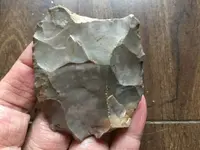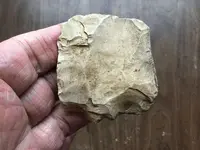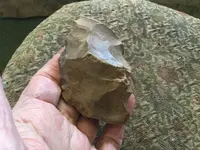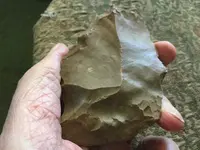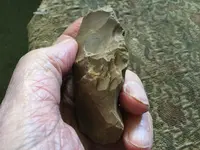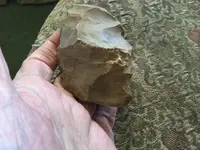uniface
Silver Member
- Joined
- Jun 4, 2009
- Messages
- 3,216
- Reaction score
- 2,905
- Golden Thread
- 0
- Location
- Central Pennsylvania
- Primary Interest:
- Other
What would have been a large Clovis point of glacial Onondaga chert from Pennsylvania that suffered what's called a "perverse end snap." Nipple was set up for the first flute but in vain.
Those guys famously loved pretty, glossy material, but they'd knap anything. If you don't believe this, get Carl Yahnig's book (which you'll have memorized if you have a serious interest in Paleo lithic technology/procedures).
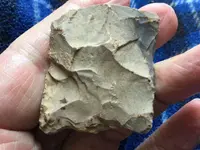
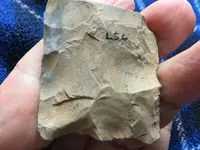
Those guys famously loved pretty, glossy material, but they'd knap anything. If you don't believe this, get Carl Yahnig's book (which you'll have memorized if you have a serious interest in Paleo lithic technology/procedures).


Amazon Forum Fav 👍
Upvote
0




